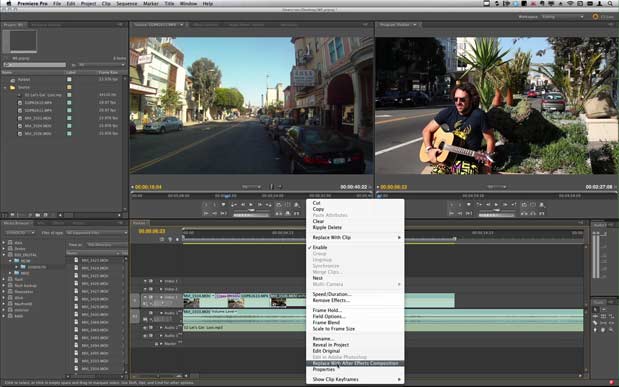
- #Warp stabilizer and speed cannot be used on same clip full#
- #Warp stabilizer and speed cannot be used on same clip free#
Look for the classic pale brown latex bands, colored bands tend to not stretch as much. Look for rubber bands with 1/16″ cross sections, in various lengths, at Office Supply type stores. Do not grab just any rubber band and try to force it to stretch really far, as it might cause the model to actually break itself when the band force causes the model’s parts to slam into each other too hard at ejection. The rubber bands need to be selected carefully.
#Warp stabilizer and speed cannot be used on same clip free#
I prefer to use white elastic thread, which will snap free when it burns. The button and carpet type of thread that Estes uses for shroud lines is too thick for anything short of a D12 ejection charge to burn. The burn thread needs to be thin so it will burn easily. A too-strong pull might make it difficult to force the elevator flat for boost. Only a light pull is needed to make the elevator pop up: instead of a rubber band, elastic thread tied into a loop of the proper length should be used. At ejection, the thread burns, allowing the rubber bands to do their thing.įor Auto-Elevator prep, see the Xebec-3A plan in the files below. What keeps them from moving until ejection? Usually a burn-thread which is rigged to hold the model in boost mode. Usually rubber bands are used to make the wings slide, pods slide, wings swing, or elevator to move. For B engine class, it’s not very competitive.ĭeployment Magic. The above R/G designs use the ejection charge only as a starting point to cause the design to go from rocket boost mode to glide mode. They are neat to see fly and deploy, but tend to be too heavy and complex to be competitive other than in the higher engine classes. Swing-Wing. Originally a definitive early design for Rocket Gliders, the wings pivot from rearward for boost to forward for glide. Usually it if does not boost straight, it pitches up a bit onto its back, due to unintended slight up elevator angle. But it is somewhat finicky as to how straight it boosts, varying from model to model (and sometimes modeler to modeler). The Xebec-B is an auto-elevator design, which is easy to build as R/G’s go. Although depending on the particular model design, the performance potential might be compromised. This is often one of the simplest and easiest rocket glider designs to use.


For glide, the elevator moves up (or canard trailing edge moves down). The elevator has to be flat (straight) for boost so there is no incidence angle between the wing and tail, so the model will boost straight. The wing slide mechanics are somewhat more difficult to build than others, but it is usually worth it.Īuto-Elevator. A design which does not move the wing, or move the CG, but changes the angle of the elevator (or canard). Slide-Wing. The wing is mounted in a manner that allows it to slide along the fuselage, so the wing is towards the back for launch (moving the CP rearward), then at ejection moves forward for glide.

Many basic design approaches have been used for Rocket Glide. A list of plans and kits is provided further down on this page. With experience, you might later develop a knack for designing your own gliders, but it’s best to learn from something proven first. Best to go with a kit such as those below, or a plan. Rocket Glider designs are more specialized than Boost Gliders, so it is not recommended for newer fliers to try to design their own. The trade-offs are between high glider performance and visibility with surviving rocket boost, and trying to get at least a reasonable boost altitude. The score is the sum two flights, as long as one is returned.Īrticle and drawings by George Gassaway, NAR 18723ĭesign Considerations. It is difficult to make and fly a glider that does not have any parts come off in flight (often with a design that uses some sort of moving parts like a sliding wing or sliding pod). The contestant may make one or two flights.
#Warp stabilizer and speed cannot be used on same clip full#
The gliding portion may not use flexible materials for its aerodynamic surfaces (if it did, it would belong in the “Flexwing” event) and may not have an attached parachute or streamerįor the full rules for this event, please see the Rocket Glider rules in the Model Rocket Sporting Code. Therefore, staging and pop-pods cannot be used. All parts of the rocket that boost must return together. This is an event about flight duration: whose rocket can stay up in the air the longest in stable gliding flight after being launched vertically with a rocket motor of a specified total impulse.


 0 kommentar(er)
0 kommentar(er)
